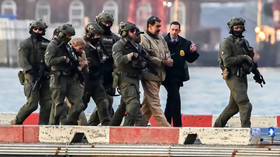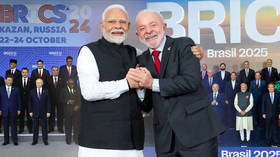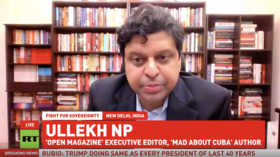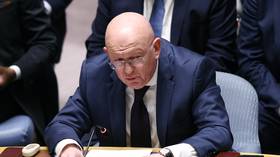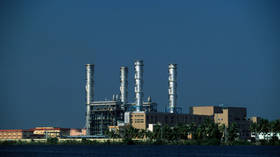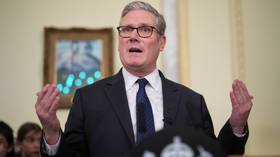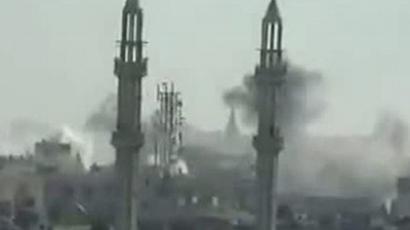UN Security Council votes to send 300 observers to Syria
The UN Security Council has unanimously voted to pass a resolution increasing the number of ceasefire observers in Syria to 300. Meanwhile, the first wave of observers reached war-torn Homs.
The resolution is aimed at enforcing a truce in the conflict between the Syrian government and the opposition, which was signed last week, but has been broken numerous times since.The final text was a compromise between two rival versions of the resolution proposed by Russia and the European Union, achieved after hours of negotiation on Friday night. The sides mostly disagreed over European demands that government forces should remove troops and heavy weapons from major urban centers before observers arrive, and face sanctions if they fail to do so. Russia had asked for no such conditions.In the end the two sides agreed to go ahead with expanding the observer force, and review further action depending on how the situation unfolds on the ground.“The resolution solidifies the consensus that has now formed in the Security Council,” said Vitaly Churkin, Russia’s UN representative.Churkin urged all sides in the dispute to follow the six-point plan formulated by former UN Secretary General Kofi Annan, who has played a key part in mediating the conflict. Other than peace, the plan calls for the release of political prisoners, freedom to demonstrate, and safe access for foreign humanitarian aid.The French Foreign Minister Alain Juppe has said that the plan is “the last chance before civil war.”After the Security Council vote, Churkin warned against a “Libyan scenario”, where a relatively tame original resolution text was used as a basis for military intervention.The new ceasefire monitors will initially stay in Syria for 90 days, and will supplement the thirty observers who are already on their way to the Middle East country.
Despite the agreement being reached, the US still is not ruling out “other means” in dealing with the crisis. Political analyst Dan Glazebrook believes this is a coded, veiled threat of extreme violence. “They are still keen to promote this idea that they may conduct some kind of aerial bombardment, a kind of mass slaughter to help their proxies on the ground in order to keep the civil war going,” he told RT.However, Glazebrook is optimistic about the UN mission and the peaceful settlement of the Syrian crisis. “The Syrian government has shown willingness to negotiate and made serious compromises in the constitutional amendments that were made recently. And more and more [of the] opposition are starting to see that way of thinking as well.”
Observers visit heart of conflict
The handful of observers who are already in Syria visited the city of Homs on Saturday morning.The city has been the focal point of the anti-government uprising since May last year, and the site of some of the conflict’s heaviest skirmishes, but there was no violence during the visit.The team met with the governor and were then taken on a walking tour through the center."The Syrian government is facilitating the work of the observers,” Nidal Kabalan, Syria’s former ambassador to Turkey told RT. “They are being allowed to do their job.”Meanwhile, opposition leaders claimed the government specifically stopped shelling Homs to impress the visiting monitors.Syria's official news agency also said that 30 opposition members whose "hands were not stained with the blood of Syrians," were released on Saturday, in accordance with the Annan plan.At least 9,000 people have died in the Syrian conflict in the last year, according to the UN.


